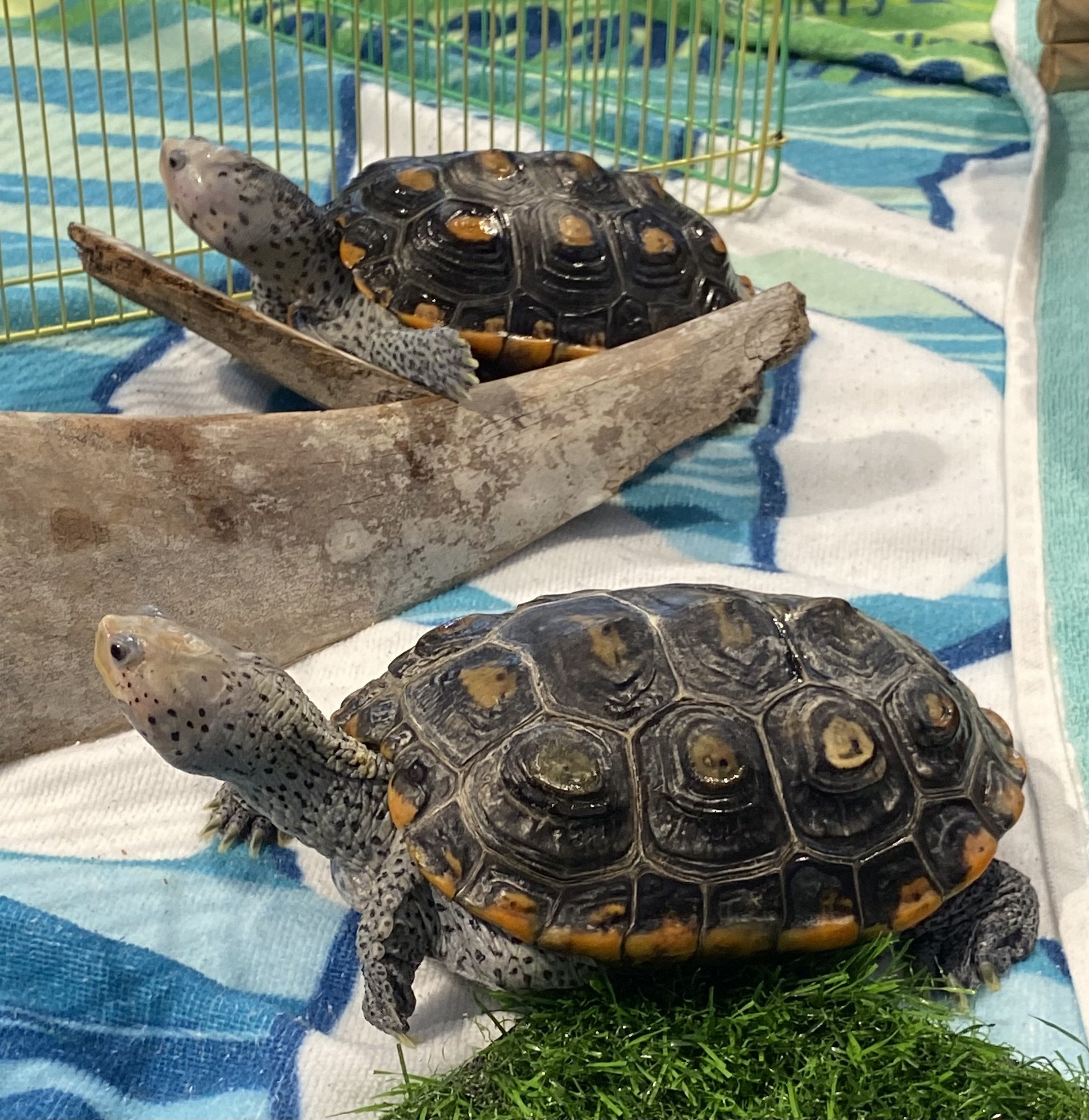Preventing Shell Shock: How You Can Help Turtle Hatchlings Survive
Bertha and Ruby, the Discovery Center’s resident diamondback terrapins.
by Madisen Hamai
Be extra careful of where you tread this time of year: there could be hundreds of baby turtles right under your feet! Hi, my name is Madisen, and I’m an animal husbandry intern at the Discovery Center. Today I’m talking about the diamondback terrapin and sea turtle nesting seasons in Florida, along with some measures you can take to help increase each hatchling’s chance of survival.
The diamondback terrapin nesting season runs from May to August, and sea turtles have a nesting season that lasts as late as October. Diamondback terrapins are classified as vulnerable, and all five species of sea turtles common in Florida are classified as endangered, so the survival of each hatchling is crucial.
Diamondback terrapins (which live in brackish water) typically nest in sandy areas, such as sand dunes, that exist above the high tide line. We might find their nests on beaches, in parks, or open areas next to salt marshes. In contrast, sea turtles will emerge from the water to nest on the same beach where they hatched. However, though diamondback terrapins and sea turtles are a little different in where they nest, we should follow the same general guidelines to ensure as many hatchlings make it as possible.
The most important thing we need to do if we ever find a terrapin or sea turtle nest is to leave it alone. Terrapin nests are difficult to spot, but some signs of a nest nearby are swirling tracks, round disturbances, and slight indentations in the sand. If you see any of these signs, it is best to tread carefully and leave the area undisturbed. Sea turtle nests are easier to find, especially because there are many organizations in Florida that patrol beaches and mark off nests. However, if you happen to find an unmarked mound that you think might be a nest, report it to the FWC (888-404-FWCC) and keep your distance.
A sea turtle nesting site in Pinellas County.
To maximize the amount of terrapin and sea turtle hatchlings that survive, it’s also important that we keep beaches, dunes, and other sandy areas clean, flat, and dark. First, we must remember that hatchlings (which, in the case of diamondback terrapins, are only the size of a quarter!) can’t climb over obstacles. This includes plastic bottles, bags, or other forms of trash that may end up by nests. Therefore, just by disposing of our garbage properly and not littering, we can save a hatchling’s life! Furthermore, because hatchlings need the ground to be flat, it’s important to knock over any sand castles or fill up holes near their nesting grounds. Lastly, in the case of sea turtles (which rely on moonlight to find their way to the ocean), we must remember to keep the beach dark at night and to turn off all lights if we’re staying on a property next to the ocean.
Thank you so much for taking the time to learn about the terrapin/ sea turtle nesting season here in Florida. The more informed we are, the higher the chance these hatchlings have at survival. If you’re interested in learning more about how we can preserve wildlife and conserve, we encourage you to visit the Discovery Center on the St Pete pier. And while you’re at it, come say hi to our two ornate diamondback terrapins: Ruby and Bertha!


